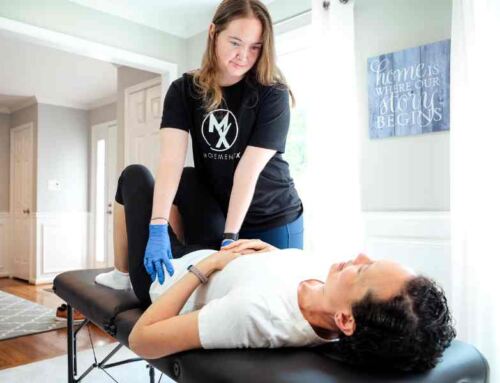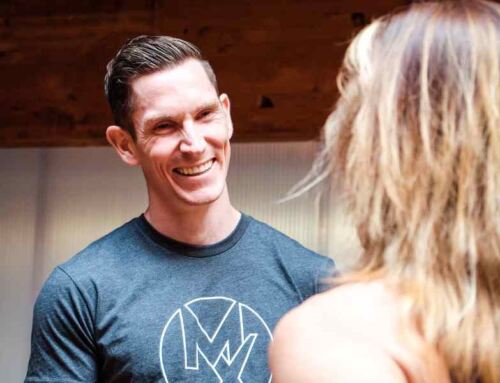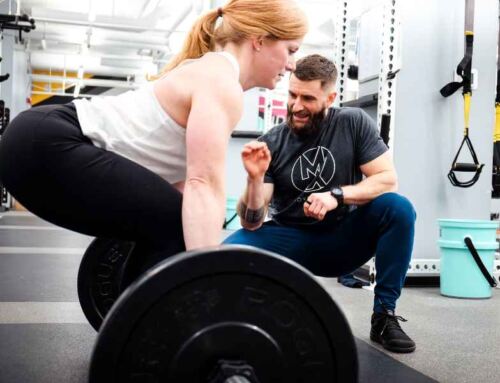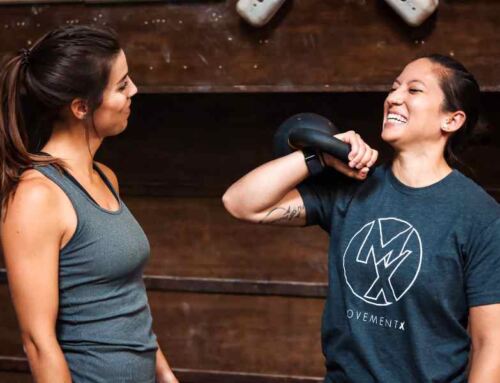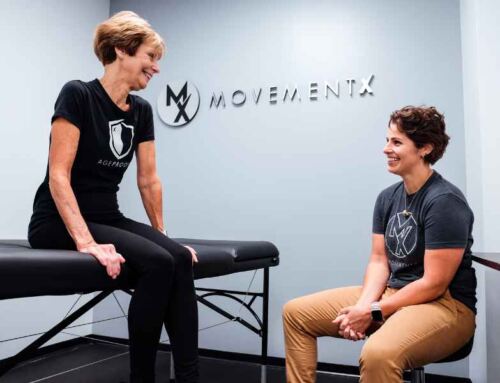Elbow pain is a growing concern for athletes of all ages, whether you are a young, promising pitcher trying to defeat the trend of rising Tommy John Surgery rates [1], a tennis player picking the racquet back up, or a golfer trying to enjoy the warm summer months and long days of sunshine.
We are also in a unique place in time where we all have more access than ever to experts across the world via social media, podcasts, and blog posts like this one!
Despite all of this, whenever I talk to an athlete with elbow pain, I consistently hear the same story
“Well, I went to see (insert medical professional here), and all they did was look at my elbow. I need an injection/surgery/dry needling and I hope it’ll get better.”
I’ve heard this same story from hundreds of athletes during my time as a sports performance physical therapist, and if this sounds like you, know that there can be a better way.
Treating The Elbow Isn’t Always Wrong!
Don’t get me wrong, there’s a time and place for getting more flexible, building strength, and especially building muscle mass in the elbow (or really any area that is experiencing pain).
There are tons of benefits, not just for sport, but for life as well [2,3], for improving your grip strength, and the amount of muscle you have in your arms.
And, certainly, building strength and muscle can take time (at least 6-8 weeks) to see any noticeable, lasting improvements in either.
If you’re currently taking this approach, and seeing significant improvement in your pain and your ability to throw a baseball, play a match, or swing a club, then there is benefit of following through with the plan and continuing onwards.
But, if this is the approach that you’ve tried, and that pain is still nagging you, well… Don’t you think there’s value in trying a different, more comprehensive, and time-tested method to solving your pain?
Assessing the Entire Body
Sports aren’t just played by one part of your body. We don’t just throw with our arm, or swing a racquet or club with our hands. We all naturally know and understand that to get the best results, we need to coordinate movement across our entire body.
Because of the rise in accessible technology such as force plates and motion capture systems, we can now measure just how big an impact one distant part of your body, say your ankle or your hip, can have on regions like your elbow, neck, or even your low back.
So when a problem arises, why would we only measure and diagnose problems in the area where the pain currently exists?
Looking at the entire body can be a daunting task, and might seem overwhelming at first. However, there are really 2 key physical qualities that should be assessed by a sports performance therapist when dealing with elbow pain specifically, or really any rotational-sports-related injury.
Flexibility: Know the Difference Between a Door Hinge and a Socket
Flexibility, or range of motion, is something we as physical therapists assess every day. However, classical flexibility tests and metrics like “can you touch your toes?” miss the mark completely when it comes to playing sports pain-free.
In the simplest terms possible, half of our body acts like a door hinge; these joints only want to go back and forth, or move in one direction.
The other half of our body is like a socket; it wants to move freely, loosely, and powerfully in all sorts of directions!
Think about the difference between your shoulder and your elbow. Our elbows are really good at bending up and down, but have you ever tried to have your elbow move a bunch side to side? It (hopefully) doesn’t move too much! Funny enough, moving too much is actually a test we do as PTs to see if the elbow joint is seriously injured, or if all the ligaments are still intact.
Shoulders can move up and down, across our bodies, side to side, and even rotate like a rotisserie.
These socket joints are really the key to athletic performance, so these are the areas that should be looked at when searching for limitations that would cause an elbow injury to sustain or even reoccur.
Thankfully, that means we can eliminate almost half the body from our “need to assess” list, and we can really hone in on what matters.
Strength Matters, But Power Matters More
It is also incredibly common for physical therapists to perform a variety of tests that measure your strength. Have you ever sat on a treatment table and had a therapist, doctor or chiropractor tell you to hold your arm out to the side while you try to resist them pushing you down?
This would be a classic strength test to ensure your muscles can function at least OK.
However, when we participate in any sport activity like tennis, baseball or golf, we aren’t really using just our strength, which is how hard our muscles can push or pull on something. What we’re really tapping into is our power, or our ability to coordinate and perform fast movements with relatively light objects.
Actions like throwing a baseball, hitting a tennis ball or smashing a drive down the fairway all occur at very high speeds: Anywhere from 50-130 miles per hour based on your activity and skill level.
These are all much higher speeds than any of us would want to drive around our neighborhood, so why would assessing how you move super slowly tell us anything about why you’re injured when playing at those speeds?
What’s cool about this is that you can use any number of tests, such as a broad jump or vertical jump, and really specialized sports physical therapists might even use fancy equipment such as force plates to get loads of objective data on your performance with these tests. With all the toys available, these tests can be really fun to perform.
The Missing Link
The last part of any comprehensive sports rehab evaluation should be actually looking at and assessing how you move in your sport!
This is often the missing link that gets completely lost in traditional rehab settings. Old, outdated ways of thinking separated the training room from the field of play, whereas top performers today are all about collaboration.
The key here is this: You could be doing all the right things when it comes to flexibility, strength and power.
You could have great testing metrics across the board, and nothing “seems” wrong.
But performance in the gym or on the treatment table doesn’t directly suggest (or guarantee) that you’re moving optimally on the mound, course, or court.
At the risk of getting too technical, here are a few biomechanical terms that you should be getting analyzed if you are a rotational athlete dealing with elbow pain.
Familiarity with these terms can only help you as an athlete in today’s age.
- Kinematic Sequence
- Weight Shift, Foot Strike, or Ground Reaction Forces
- Disassociation
These terms explain the difference between strong, powerful and healthy athletes who are top performers in their sport compared to strong, powerful but unhealthy or injured athletes who can’t seem to shake an injury.
A great example is Pro Bowl quarterback of the Buffalo Bills, Josh Allen. In this clip, he shares how he dealt with an “unfixable” shoulder injury all throughout his rookie season, despite having one of the strongest arms in the league, all because his mechanics weren’t optimized.
The key here is that a sports performance physical therapist is NOT going to replace a tennis coach or pitching instructor or swing instructor! Instead, a different but equally knowledgeable set of eyes is going to optimize not only your health, but your performance as well.
If you’re struggling with persistent elbow pain, reach out to me or another MovementX provider who can help assess not only your entire body, but your actual sport movement, on the court or field or course of competition, live and in-person!
References
- Meta, Fabien, et al. “Epidemiology of Elbow Medial Ulnar Collateral Ligament Surgeries in Major and Minor League Baseball Pitchers: A Descriptive Study of 2281 Cases.” Orthopaedic Journal of Sports Medicine 13.7 (2025): 23259671251352199.
- Wu Y, Wang W, Liu T, Zhang D. Association of Grip Strength With Risk of All-Cause Mortality, Cardiovascular Diseases, and Cancer in Community-Dwelling Populations: A Meta-analysis of Prospective Cohort Studies. J Am Med Dir Assoc. 2017 Jun 1;18(6):551.e17-551.e35. doi: 10.1016/j.jamda.2017.03.011. PMID: 28549705.
- Strand BH, Cooper R, Bergland A, Jørgensen L, Schirmer H, Skirbekk V, Emaus N. The association of grip strength from midlife onwards with all-cause and cause-specific mortality over 17 years of follow-up in the Tromsø Study. J Epidemiol Community Health. 2016 Dec;70(12):1214-1221. doi: 10.1136/jech-2015-206776. Epub 2016 May 26. PMID: 27229009; PMCID: PMC5136688.
About the Author
Dr. Bobby Prengle is a physical therapist based in Raleigh, NC. He treats orthopedic sports, neurologic, and age-based conditions. Bobby Prengle specializes in treating various athletes (golfers, rotational, runners, racket sports, impact sports) and active adults. With a passion for leveraging technology and leading research in his treatment, Dr. Bobby Prengle is ready to help you find the perfect blend of challenge and progress to get results.



